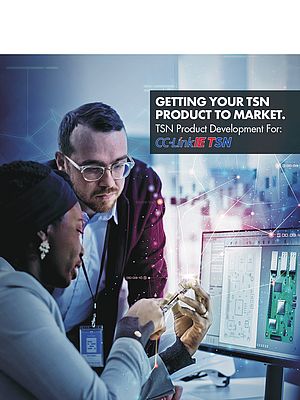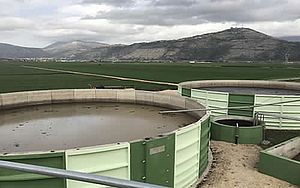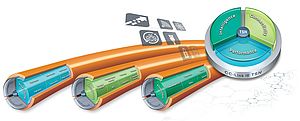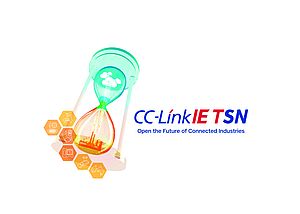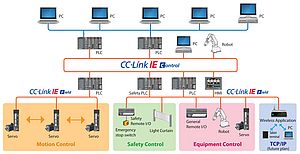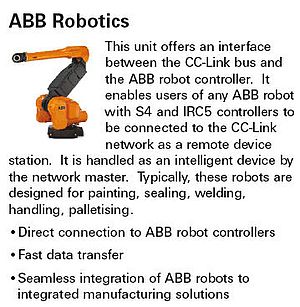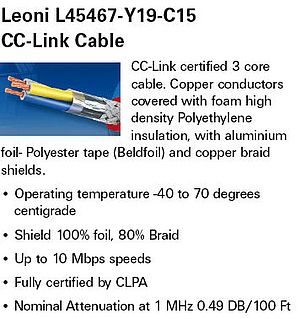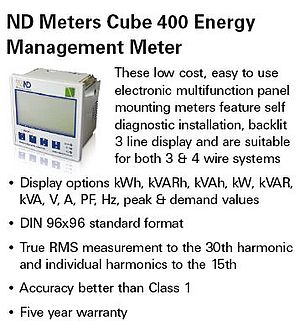John Browett spent the first 18 years of his career in various engineering and marketing roles for Mitsubishi Electric’s automation businesses in Japan, the USA and Germany. He has spent the last eleven years with the CC-Link Partner Association (CLPA) in Europe where he is now General Manager. In 2018, he oversaw the launch of CC-Link IE TSN in the European market, the first open industrial Ethernet to combine gigabit bandwidth with Time-Sensitive Networking (TSN). He is committed to working with leading automation vendors in Europe and beyond to deliver the converged network architectures required by Industry 4.0 to enable the connected industries of the future. He holds a BEng in electronic engineering from Lancaster University in the UK which included study at the University of California, Los Angeles, plus a post graduate management diploma from the University of Cambridge. He is a Chartered Marketer (CMktr) and Member (MCIM) of the Chartered Institute of Marketing (CIM).
If you would like to listen to the podcast, please use this link.
IEN Europe: What is TSN and what does it involve?
TSN stands for Time-sensitive Networking. It is an update to the existing Ethernet specifications. It takes regular Ethernet and makes it deterministic. What that means is that things happen when you want them to happen, and when you expect them to happen. In the past, as far as being used in industrial automation, Ethernet did not have this ability. Since Ethernet was invented for the IT world originally, sending an email to somebody that arrives this minute or the next minute does not really matter. But when you're running high speed machinery, like on the packaging line, if things are not all tightly synchronized together and happen exactly when you plan them too, that can cause real problems. TSN allows you to forget about those problems, because it means that now Ethernet is deterministic and as a result we can use it much more easily for industrial automation now.
IEN Europe: Why is TSN important nowadays?
One example is Industry 4.0 becoming a key topic for manufacturing nowadays. Industry 4.0 depends on being able to move data and information around more easily and use that data to understand what's going on in the processes in a better way to manage them more effectively. TSN allows that to happen in a better way by providing what we call convergence. Convergence means that we can combine multiple types of traffic together onto a single network architecture. This is enabled by having the foundation of determinism that we talked about previously.
In the past, it might have been necessary to have multiple different kinds of networks to have different functions on machines and production lines. This made things more complicated because with multiple networks, you had more costs, more maintenance issues, and it was more difficult to combine what these were all doing together to understand what the big picture was. But now, with TSN allowing convergence, we can combine all that traffic together on one network and as a result, it makes it easier to have a comprehensive view of it. This acts as good support for Industry 4.0 as it is made easy to get data out of a system and process it into useful information, and then feed it back into a system to run it in the most optimum way.
IEN Europe: What benefits can it deliver to manufacturing?
There are probably four key benefits TSN can deliver. One of them is greater transparency and therefore better management of systems. The second one is the ability to have simpler network systems. Instead of needing multiple networks to do different functions, now we can combine everything together on one network. And that doesn't just apply to automation traffic. In the past, we already had industrial Ethernet technologies that could possibly combine for example motion control, safety, and normal general I/O, onto a single network. TSN allows these possibilities but can also combine it with normal TCP IP traffic. For example, if you've got a video camera doing inspection processes, you can combine all that traffic together with it too. It is further simplifying things.
The third benefit is the convergence as said earlier. It also means that it's now going to be easier to combine the operational technology area, such as the shop floor or the production lines, to the IT world. One of the key things that industry 4.0 is using these days is more cloud services in manufacturing. The ability to combine what's happening in the factory with what's happening in the IT world and in the cloud is a key benefit too. Finally, and as a result, another benefit is that we can increase productivity, if you can run your processes in a more optimized and effective way.
IEN Europe: How can TSN-compatible products be developed?
There are a couple of different ways. First, you can develop a product by just using a software-based method. For companies who are looking to get a product to market quickly, that is a good option because in many situations they can take an existing product, which maybe already supports another kind of industrial Ethernet, and by changing the stack on that they could incorporate TSN connectivity. The other option, which maybe is perhaps a little bit more complicated, but may deliver higher levels of performance is to take a hardware-based approach. You can use dedicated ASICs to embed TSN functions and have everything implemented in hardware.
Another key point that goes along with those two is to also consider the bandwidth that you need to achieve for the product, how fast it can communicate on the network. And right now, I think 100 megabit is a well-established bandwidth figure for a lot of industrial automation. What we are seeing over the past few years and what's becoming more important now, along with the demands of Industry 4.0 and the ability to handle more data, is that gigabit bandwidth becomes a lot more important now as more data needs to be handled and dealt using bandwidth.
IEN Europe: What do automation vendors need to consider in order to create successful solutions?
First, the ability to implement TSN using hardware or software and different bandwidth options. Most vendors have a pretty broad product portfolio of different devices, with different functionalities. It is important to look at the existing portfolio that a vendor might have and decide, which of these products could we possibly update to support TSN in the future and along with that, they have their roadmap for future development. There are going to be new products that maybe haven't been developed yet or start development soon. Perhaps they are good candidates for supporting TSN from a hardware point of view and implementing it that way. No matter how you want to do it, what are your existing skills, platforms, and engineering methods. There is a range of different ways to implement TSN which pretty much suits almost any kind of product or any kind of vendors engineering processes.
IEN Europe: What organizations or companies have already developed products and solutions?
There is quite a lot of TSN products on the market already. One of the key vendors that are offering these kinds of products and solutions right now is Mitsubishi Electric. They offer very comprehensive solutions for various types of industrial automation and have been supporting TSN now for some time, all based on the CLPA technology CC-Link IE TSN. There are close to 100 products that all have TSN capability. There are also a lot of companies now getting into the TSN area like Moxa and Hirschmann/Belden who can offer various infrastructure products such as network switches. There are also companies like NXP Semiconductor with various devices that will support TSN as so does Renesas for example.
IEN Europe: What further developments will shape the future of industrial connectivity in the industrial automation market?
If you look back 10-20 years ago, people would not have thought about the many enhancements happening in automation today. It is not completely certain what the future will hold but if we look into the crystal ball, there are some technologies that are already moving into industrial automation and are making a big impact. They include Artificial Intelligence, of course. It's getting quite common now to talk about AI and Machine Learning in various manufacturing processes.
Also making a big impact over the past few years are the various kinds of wireless technology, such as 5G technology. We're seeing a lot of big end users now who have started to implement private 5G networks in their facility to gain some benefits there especially for mobile machinery like AGVs. There are also Cloud services. We are seeing a lot of companies now starting to move some of their process infrastructure into the cloud. In the past you would have had local computing facilities to be doing the analysis of processes, or SCADA. A trend now to move into a cloud-based environment gives a greater ability for collaboration and sharing that data across different parts of an organization.
One of the things that goes along with that is edge computing that is showing a lot of promise for the future. There is the ability to have these nodes on the network, and they kind of act as filters in a way to do local processing of data. They then figure out what is the important matter and send the information to the cloud so that you can keep your processes running at maximum efficiency rather than trying to keep track of every tiny little piece of data that may not be as important as others.
Combining all those technologies together will shape the further developments. Those interesting technologies are just starting to appear in manufacturing now, and I think they are going to continue to make a big impact as we move into the future.
IEN Europe: Do you have any other comment?
Yes, just one final comment. We have all these future technologies which are starting to make an impact. But I think that the key points, certainly from our point of view, is that all of these depend on data and the ability to be able to move data around in a real time predictable manner. This is why TSN will make a valuable contribution to all of these future activities. Because in the end, if you can't move your data around in a real time, predictable, high performance manner, using gigabit bandwidth, then you're going to struggle to implement some of these technologies. TSN will play a key role, along with gigabit bandwidth in all these technologies as we move forward into the future.
Anis Zenadji




